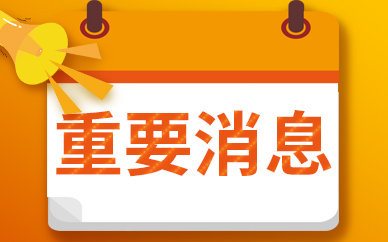China enters a new stage of COVID-19 response
China released the 10th COVID-19 prevention and control protocol Jan. 7, outlining regular disease surveillance requirements and ramped-up measures to counter an emergency. It has also downgraded its management of COVID-19 from Class A to Class B since Jan. 8, 2023, entering a new stage of COVID-19 response.
Doctors guide villagers of Shuangzhuang village, Huaiyin district, Huai"an city, east China"s Jiangsu province, on how to take medicines safely, Jan. 4, 2023. (People"s Daily Online/Zhao Qirui)
 (资料图)
(资料图)
Over the past three years, China has always maintained its strategic initiative in its fight against COVID-19. It has withstood the impact of five rounds of global COVID-19 outbreaks and effectively handled more than 100 cluster outbreaks, buying precious time for the research, development and application of vaccines and medicines, and the preparation of medical resources.
China has been optimizing and adjusting its COVID prevention and control measures in light of the evolving situation. It has effectively avoided widespread infections with the original strain and the Delta variant, which are relatively more pathogenic than the other variants.
The country also kept its rates of infection and mortality at the world"s lowest level. Despite the pandemic, the average life expectancy of the Chinese population rose from 77.3 years in 2019 to 78.2 years in 2021.
After China downgraded its management of COVID-19 from Class A to Class B, the country has shifted its focus from infection prevention to medical treatment and prevention of severe cases. It has taken relevant measures to safeguard people"s life and health to the greatest extent possible and minimize the impact of COVID-19 on economic and social development.
As the COVID-19 pandemic has raged across the globe, almost all countries have been affected to some extent.
In China, putting people"s lives and health first has been the primary consideration in formulating policies for the prevention and control of the pandemic. China has paid the treatment cost for COVID-19 patients in designated hospitals, provided free COVID-19 vaccination for all its citizens, and included anti-COVID-19 drugs in the national medical insurance system.
Articles published in the world-leading medical journal The Lancet pointed out that the Chinese government has saved thousands of lives through its huge investment in public health, and the country"s experience in fighting the COVID-19 pandemic is worth learning by other countries.
Photo taken on Jan. 7, 2023 shows the brightly lit container terminal of Shanghai Yangshan Deep Water Port in east China"s Shanghai. (People"s Daily Online/Ji Haixin)
At the beginning of the new year, 31 teams made up of doctors of local public health centers, visited elderly residents of Wangtan township, Keqiao district, Shaoxing city, east China"s Zhejiang province, to give supply kits for COVID-19 to them.
"Uncle Zhang, these are the anti-epidemic kits provided by the government for senior citizens. There are medicines, face masks and disinfecting wipes in them. Please take it," an official handed a package to an elderly resident and said.
At the end of 2022, China saw a dramatic surge in the market demand for N95 face masks. In an effort to meet the demand, companies have worked overtime to improve production capacity.
Within a month, the number of companies covered by the production scheduling mechanism established by the country"s Ministry of Industry and Information Technology (MIIT) for ensuring the supply of medical supplies increased from 50 to more than 500. The daily output of N95 masks in the country exceeded 190 million pieces, effectively guaranteeing adequate supply.
Similarly, as the country faced a tight supply of face masks in early 2020, enterprises in other industries made rapid adjustments to producing masks and other products for the fight against the pandemic. As a result, the country"s daily output of face masks grew about 13.5 times in merely 35 days.
Over the past three years, China has shown extraordinary capabilities of organization, coordination and implementation, providing a fundamental guarantee for the country to ward off risks and challenges and pool strength to overcome difficulties.
On Jan. 1, 2023, Shanghai Port in east China"s Shanghai municipality announced that its container throughput exceeded 47.3 million 20-foot equivalent units (TEUs) in 2022, ranking first in the world for 13 consecutive years.
On Dec. 28, 2022, the 2022 Global Digital Trade Conference and Wuhan (Hankoubei) Commodities Fair kicked off in Wuhan, capital city of central China"s Hubei province. The event attracted diplomatic envoys, heads of business associations, and hundreds of well-known entrepreneurs from more than 30 countries, creating a lively scene in marked contrast to the empty streets of the city three years ago when it was struck by the COVID-19 outbreak.
Shanghai and Wuhan, two cities that have gone through a tough test by the pandemic, are beaming with vitality and prosperity. It is a vivid reflection of how China has efficiently coordinated the COVID-19 response with social and economic development during the past three years.
In 2020, China was among the first countries in the world to bring the pandemic largely under control and resume production and work, and the only major economy to achieve positive growth in the pandemic-ravaged year.
Visitors enjoy the scenery of Xiangyang ancient town in Xiangcheng district, Xiangyang city, central China"s Hubei province, Jan. 1, 2023. (People"s Daily Online/Yang Dong)
In 2021, China"s gross domestic product (GDP) grew by 8.1 percent year on year, ranking it among the fastest in major economies in the world.
In the first 11 months of 2022, the total added value of industrial enterprises above the designated size in China rose by 3.8 percent year on year, and the country"s fixed-asset investment grew 5.3 percent from the same period in 2021. Its foreign trade in goods expanded 8.6 percent year on year during the period.
In 2022, despite the impacts of the COVID-19 resurgence and other unexpected factors, China"s economy registered a V-shaped recovery with an estimated annual economic output exceeding 120 trillion yuan ($17.69 trillion), once again demonstrating strong resilience.
As China"s COVID-19 response has entered a new stage, it continues to optimize its science-based COVID-19 prevention and control measures to ensure a smooth transition and maintain social stability, laying a solid foundation for steady economic recovery.
Since Jan. 8, 2023, people in China have no longer been required to take temperature checks when entering passenger terminals or taking public transport.
In addition, the country has lifted anti-COVID-19 restrictions on international passenger flights, and optimized its regulations on travel between the mainland and Hong Kong and Macao.
Various regions and authorities in the country have ramped up efforts during the transition period. At present, the country sees the accelerated resumption of work and production, gradual reopening of businesses and markets, and positive new changes in people"s work and life.
Recently, the central business districts of many cities in China have seen a resurgence, with catering and entertainment consumption rebounding quickly.
The Bund in Shanghai was crowded with people on New Year"s Eve; the SKP shopping mall in Chengdu, capital of southwest China"s Sichuan province, saw a long line on the first day of its soft opening; and the most popular shopping district in Changsha, capital of central China"s Hunan province, is jam-packed with visitors.
As the country"s COVID-19 response has been further optimized, China is unleashing its development vitality at a faster pace.
"Since the 10 new measures were rolled out to optimize COVID-19 response, the online search for air tickets surged seven times. After the COVID-19 management measures were downgraded from Class A to Class B, bookings for domestic air tickets spiked to the peak of the recent three months," said Guo Lechun, vice-president of the big data research institute of online travel service provider Qunar.com.
Practices have proven that China enjoys the institutional advantage of its socialist market economy and the demand advantages of its super-large domestic market, the supply advantages underpinned by its complete industrial system, and sufficient human resources featuring intelligent and hardworking workers and entrepreneurs.
As long as China can truly unleash its advantages and dynamism, proceed with confidence, and pool strength, it is bound to secure a full victory in its fight against the COVID-19 pandemic.
-
 China enters a new stage of COVID-19 response Chinareleasedthe10thCOVID-19preventionandcontrolprotocolJan 7,outlini
China enters a new stage of COVID-19 response Chinareleasedthe10thCOVID-19preventionandcontrolprotocolJan 7,outlini -
 每日短讯:【国际3分钟】麦卡锡艰难上位 美国“内战”远未结束 历经4天15轮投票后,共和党领袖凯文·麦卡锡终于当选美国国会众议院新任议长,这次选举也成为美国自南北战争以来一百多年中最漫长的众议...
每日短讯:【国际3分钟】麦卡锡艰难上位 美国“内战”远未结束 历经4天15轮投票后,共和党领袖凯文·麦卡锡终于当选美国国会众议院新任议长,这次选举也成为美国自南北战争以来一百多年中最漫长的众议... -
 天天日报丨(新春走基层)新疆精河县举办冰雪“那达慕”为冬季旅游“添把火” 图为雪地上的叼羊比赛,选手们看似混战一团,内里却暗藏不少门道。安晓龙摄中新网新疆精河1月12日电(安晓龙马东强)1月12日,冰雪“那达...
天天日报丨(新春走基层)新疆精河县举办冰雪“那达慕”为冬季旅游“添把火” 图为雪地上的叼羊比赛,选手们看似混战一团,内里却暗藏不少门道。安晓龙摄中新网新疆精河1月12日电(安晓龙马东强)1月12日,冰雪“那达... -
 视讯!观察特稿|“小三通”复航吹暖两岸 同胞共迎新“春”、共盼团圆 中国台湾网1月12日讯新年伊始,天高海蓝的“鹭岛”飘来阵阵暖意,吹散了冬日里的寒霜。很多金门乡亲,终于盼到了这一天。1月7日,中断近...
视讯!观察特稿|“小三通”复航吹暖两岸 同胞共迎新“春”、共盼团圆 中国台湾网1月12日讯新年伊始,天高海蓝的“鹭岛”飘来阵阵暖意,吹散了冬日里的寒霜。很多金门乡亲,终于盼到了这一天。1月7日,中断近... -
 2022年西藏修复退化草原437.5万亩 生态环境明显改善|每日播报 记者从2023年1月13日举行的西藏自治区第十二届人民代表大会第一次会议上了解到,2022年,西藏全区完成营造林117 9万亩,修复退化草原43...
2022年西藏修复退化草原437.5万亩 生态环境明显改善|每日播报 记者从2023年1月13日举行的西藏自治区第十二届人民代表大会第一次会议上了解到,2022年,西藏全区完成营造林117 9万亩,修复退化草原43... -
 微动态丨活力中国丨从百姓菜篮子里感受中国经济活力 再过一周,我们就要迎来兔年新春了,这也是疫情防控政策持续优化后的第一个春节。餐饮、商超、景区全面恢复,人们出行半径扩大,浓浓的...
微动态丨活力中国丨从百姓菜篮子里感受中国经济活力 再过一周,我们就要迎来兔年新春了,这也是疫情防控政策持续优化后的第一个春节。餐饮、商超、景区全面恢复,人们出行半径扩大,浓浓的... -
 提振信心在行动丨云南:推进口岸建设 打造辐射中心 云南抓住国家支持云南加快辐射中心建设的重大机遇,聚焦中国—中南半岛经济走廊、孟中印缅经济走廊和中老泰、中越、中缅等大通道建设,...
提振信心在行动丨云南:推进口岸建设 打造辐射中心 云南抓住国家支持云南加快辐射中心建设的重大机遇,聚焦中国—中南半岛经济走廊、孟中印缅经济走廊和中老泰、中越、中缅等大通道建设,... -
 浙江台州:免费托管医护人员子女|环球微速讯 【抗疫中,我们众志成城㊽】光明日报通讯员洪佳祯光明日报记者陆健1月9日9点半,在獴启双语托育中心,伴随着欢快的歌声,老师为大班的小...
浙江台州:免费托管医护人员子女|环球微速讯 【抗疫中,我们众志成城㊽】光明日报通讯员洪佳祯光明日报记者陆健1月9日9点半,在獴启双语托育中心,伴随着欢快的歌声,老师为大班的小... -
 新春走基层 |探秘“复兴号” 感受“智能春运” 今年春运已经开始,你会选择乘坐高铁回家过年吗?今年,最高时速达350公里的新型“复兴号”智能高速动车组迎来了自己的第一个春运。车厢...
新春走基层 |探秘“复兴号” 感受“智能春运” 今年春运已经开始,你会选择乘坐高铁回家过年吗?今年,最高时速达350公里的新型“复兴号”智能高速动车组迎来了自己的第一个春运。车厢... -
 焦点速看:农村防疫,谁站在“最后一公里” 1月7日,贵州黔东南,医务人员进村入户开展义诊巡诊。视觉中国供图甘肃省武威市古浪县定宁镇基层医生送药上门。受访者供图安徽省淮南市...
焦点速看:农村防疫,谁站在“最后一公里” 1月7日,贵州黔东南,医务人员进村入户开展义诊巡诊。视觉中国供图甘肃省武威市古浪县定宁镇基层医生送药上门。受访者供图安徽省淮南市...
热点
-
 癸卯寄福·共圆共生 —— 艺术大师黄永玉妙笔绘制《癸卯年》特种邮票 环球视点 新年伊始,国内的邮迷们可是开心坏...
癸卯寄福·共圆共生 —— 艺术大师黄永玉妙笔绘制《癸卯年》特种邮票 环球视点 新年伊始,国内的邮迷们可是开心坏... -
 今年中考时间定了:6月 26日至28日 佛山新闻网讯珠江时报记者区辉成报...
今年中考时间定了:6月 26日至28日 佛山新闻网讯珠江时报记者区辉成报... -
 天天报道:以高质量发展谱写现代化三水新篇章 今年是全面贯彻落实党的二十大精神...
天天报道:以高质量发展谱写现代化三水新篇章 今年是全面贯彻落实党的二十大精神... -
 热点!顺德区十七届人大三次会议闭幕,各镇街作答如何打造最友好制造业强区 1月12日,顺德区十七届人大三次会...
热点!顺德区十七届人大三次会议闭幕,各镇街作答如何打造最友好制造业强区 1月12日,顺德区十七届人大三次会...
文章排行
娱乐图赏
-
 世界今日讯!打通党建“融合脉”,激发基层自治活力 社区是社会治理的基本单元,也是社...
世界今日讯!打通党建“融合脉”,激发基层自治活力 社区是社会治理的基本单元,也是社... -
 浙江美大:董事会及监事会将延期换届 延期后的换届选举工作预计最迟将于...
浙江美大:董事会及监事会将延期换届 延期后的换届选举工作预计最迟将于... -
 异动快报:*ST科林(002499)1月13日9点31分触及跌停板 1月13日盘中消息,9点31分*ST科林...
异动快报:*ST科林(002499)1月13日9点31分触及跌停板 1月13日盘中消息,9点31分*ST科林... -
 1月12日基金净值:华安宝利配置混合最新净值0.945,跌0.42%|世界今热点 1月12日,华安宝利配置混合最新单...
1月12日基金净值:华安宝利配置混合最新净值0.945,跌0.42%|世界今热点 1月12日,华安宝利配置混合最新单...